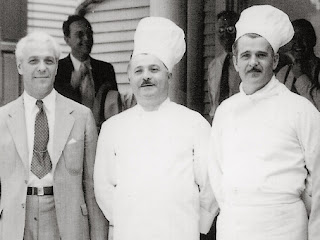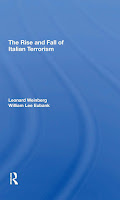Emilian immigrant who founded canned pasta brand
 |
| Boiardi wowed diners with his signature pasta sauce |
Boiardi, whose culinary skills first gained popularity when he was working in the kitchens of the iconic Plaza Hotel in New York, hit upon the idea of selling cook-at-home Italian food after opening his first restaurant while still in his 20s.
He and his brother, Paolo, built a company that employed 5,000 staff and filled 250,000 cans per day at its peak, making the Chef Boyardee brand a familiar sight in grocery stores across America.
They eventually sold the business for $6 million dollars in 1948 but the Chef Boyardee brand never went away. Today, Chef Boyardee products, which still carry Ettore Boiardi’s image on their packaging, are made and marketed by Chicago-based Conagra Brands.
Ettore and Paolo grew up in Piacenza. Their parents, Giuseppe and Maria, inspired them to be interested in food from an early age and Ettore was working in a local restaurant, La Croce Bianca, by the time he was 11. Although his tasks were limited to peeling potatoes, emptying waste bins and other menial duties, he performed them while observing how the head chef created dishes to serve to his customers.
Like many young Italians of his time, Ettore believed he would need to go abroad if he was to make something of his life. As a teenager, he made his way to Paris and London, taking work where he could to gain experience.
 |
| Ettore (centre) with brothers Mario (left) and Paolo pictured at their factory in Milton |
Indeed, such was his popularity that word quickly spread about his culinary talents and he enjoyed a meteoric rise. Within a year of disembarking at Ellis Island, he had been hired as head chef by the Barbetta restaurant on 46th Street and was soon also headhunted by the exclusive Greenbrier Resort in West Virginia.
It was there, at the age of just 17, that Boiardi is said to have been put in charge of catering at the wedding reception of the US President, Woodrow Wilson, and his second wife, Edith. Wilson was so impressed he asked Boiardi to supervise a homecoming meal for 2,000 soldiers returning from service in World War One.
An offer to be head of the kitchen at the prestigious Hotel Winton took him next to Cleveland, Ohio, where he met and married his wife, Helen, who encouraged him to open his own restaurant, the Giardino d’Italia, in 1926. It was something of a gamble. While Italian restaurants were rapidly gaining popularity in the cities of the east and west coasts, there were still comparatively few inland.
 |
| Ettore's image still figures on the packaging labels of Chef Boyardee products today |
Boiardi obliged by filling sterilised milk bottles with the sauce. This was noticed by two of his regular customers, Maurice and Eva Weiner, who were the owners of a nationwide chain of grocery stores. They suggested he should consider canning the sauce, which they could sell in their shops.
So it was that Helen and Ettore - now known by his anglicised name of Hector - were joined by Paolo and another brother, Mario, in launching the Chef Boiardi Food Company, in 1928, selling the sauce together with packs of spaghetti and tubs of grated parmesan cheese as a ready-to-heat meal kit.
In time, the name was changed to Chef Boyardee, which the brothers reasoned wa easier for Americans to pronounce, and production shifted to a bigger plant in Milton, Pennsylvania, which Boairdi chose for its fertile soil so that he could use locally-produced tomatoes, the key ingredient of his sauces, which eventually required him to produced 20,000 tons every year.
The Second World War created problems for the company, despite being handed a contract to produce ration packs for American servicemen. By the end of the war, maintaining 24-hour production and employing 5,000 staff in their factories became too much for the brothers, who decided to sell up to American Home Foods.
By the time Ettore died in 1985, at the age of 87, Chef Boyardee lines were grossing $500 million a year as one of the best-known tinned pasta brands in America.
 |
| The Palazzo Comunale in Piacenza, flanked by Francesco Mochi's equestrian statues |
Piacenza, where Ettore Boiardi was born, is a city in the Emilia-Romagna region of northern Italy. The main square in Piacenza is named Piazza Cavalli because of its two bronze equestrian monuments featuring Alexander Farnese, Duke of Parma and his son Ranuccio I Farnese, Duke of Parma, who succeeded him. The statues are masterpieces by the sculptor Francesco Mochi. The square is dominated by the Palazzo Comunale, also known as il Gotico, was built in 1281 as the town hall. With its pink marble and brick facade, notable for its five arcades, it is an excellent example of civil architecture in Lombard Gothic style. The city is situated between the River Po and the Apennines, between Bologna and Milan. It has many fine churches and old palaces. Piacenza Cathedral was built in 1122 and is a good example of northern Italian Romanesque architecture.
 |
| Parmigiano Reggiano cheese is one of many food products from Emilia-Romagna |
The Emilia-Romagna region is widely regarded as one of the food capitals of Europe. Parmigiano Reggiano cheese, balsamic vinegar from Modena and Prosciutto di Parma cured ham all originated in Emilia-Romagna, while ragù bolognese meat sauce originates in the region capital of Bologna, although it would be served with tagliatelle rather than spaghetti in Italy. The stuffed pasta dish tortellini in brodo - cushions of pasta filled with mortadella, prosciutto and pork loin served in a clear chicken broth - is another local speciality. Historically, it was the cities of Emilia - Piacenza, Parma, Reggio Emilia, Modena and Ferrara - whose cuisines were dominated by pork and pork products, although the whole region is renowned as a meat-eater’s paradise.
Also on this day:
1885: The birth of tenor Giovanni Martinelli
1946: The birth of singer Roberto Loreti
1965: The birth of actress Valeria Golino
1967: The birth of conductor Salvatore Di Vittorio
1968: Soave wine awarded DOC status
.jpg)

.jpg)

.jpg)
.jpg)

.jpg)



.jpg)
